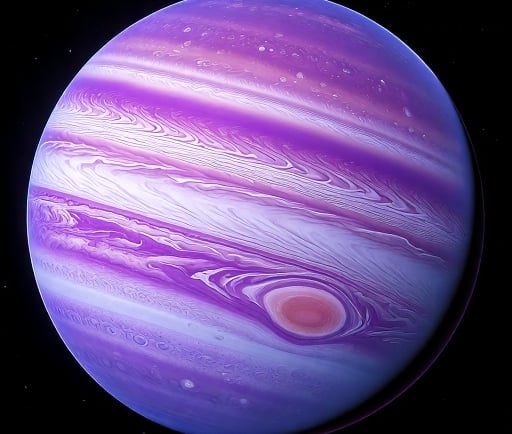HIP 55507 b: A Forming Gas Giant


Introduction to HIP 55507 b
In the grand tapestry of the cosmos, exoplanets serve as curious subjects of discovery, particularly those that revolve around distant stars. Among these celestial bodies is HIP 55507 b, a captivating gas giant located in orbit around a K-type star. This intriguing planet boasts a mass of approximately 8.135 times that of Jupiter, making it a significant object of interest for astronomers and astrophysicists alike.
The Characteristics of HIP 55507 b
HIP 55507 b is far from an ordinary exoplanet. With its dense atmosphere and massive structure, it invites scientific inquiry into its formation and evolution. One of the key aspects of this gas giant is its orbital period; it takes about 14.1 years to complete a single revolution around its host star. This extended period offers a unique opportunity to study the dynamics of its atmosphere and any potential phenomena that may arise from its prolonged orbit.
Additionally, the star around which HIP 55507 b orbits, a K-type star, presents its own set of characteristics. K-type stars are known for their moderate temperatures and longevity, contributing to stable environments in which planets like HIP 55507 b can form and develop. The combination of a massive planet circling a stable star could provide insights into the conditions necessary for the evolution of similar planets in other star systems.
Significance in Exoplanet Research
The existence of HIP 55507 b contributes to our growing understanding of gas giants within the universe. By analyzing such exoplanets, researchers can better comprehend the diverse planetary systems that exist beyond our solar system. This knowledge enriches our understanding of planetary formation, migration, and the potential for habitable environments elsewhere in the universe.
Moreover, the study of large gas giants like HIP 55507 b can have implications for understanding atmospheric chemistry and dynamics. With advanced telescopes and instruments, scientists can study the composition of its atmosphere, discovering important clues about the behavior of gases under different conditions. This research not only illuminates the nature of HIP 55507 b but may also reveal similarities and differences with gas giants found within our own solar system.
In conclusion, HIP 55507 b exemplifies the rich diversity of exoplanets orbiting stars far from our own. As astronomers continue to investigate its characteristics and intricacies, this gas giant remains an important entry in the ongoing exploration of the cosmos. The study of such planets fuels ongoing curiosity and inspires future discoveries that may further unravel the mysteries of our universe.
